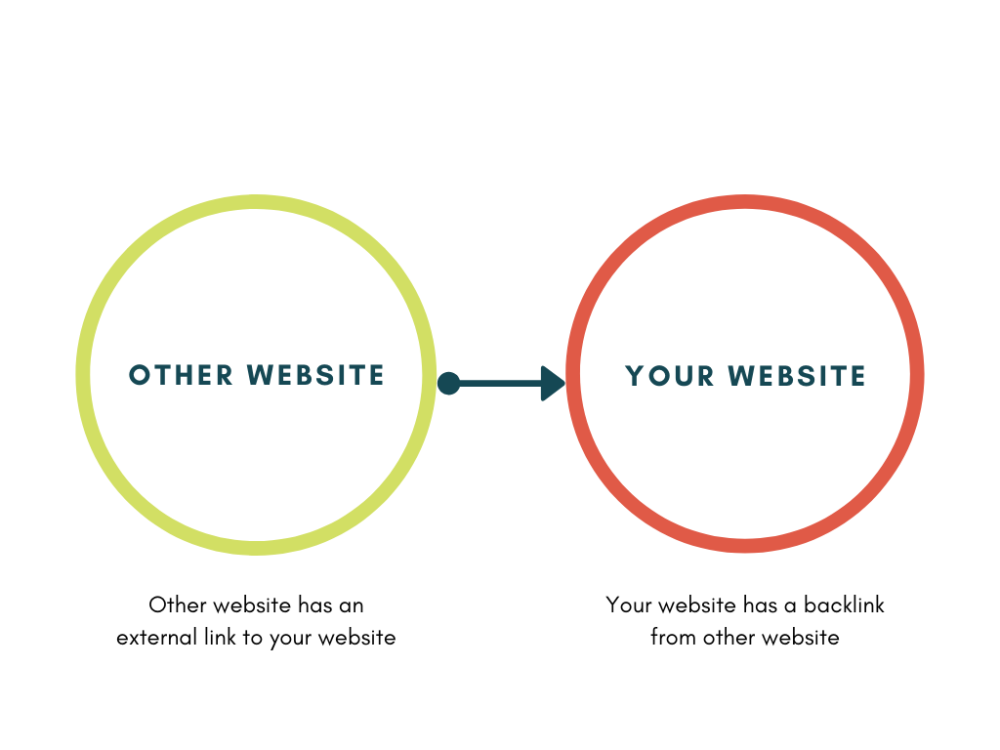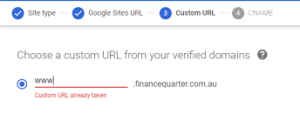What Is Backlinks?
With over 1.98 billion webpages on the internet, it’s no surprise that the great majority of SERPs have become conflict zones.
Guess who has the biggest guns? That’s correct, firms are investing millions of dollars in SEO.
To even attempt to outperform them, you’ll need a proper SEO plan, and a large part of that approach focuses on effective link development.
We all know that you can’t compete with the big guys in terms of resources. But if you do it correctly, you may not have to.
We questioned nearly 200 marketers (191 to be exact) who fought their way to the top of rankings, and, shockingly, 40% of them indicated they don’t have a budget for link building, while another third pay less than $200 each month.
- What is a Backlink?
- 5 Reasons Why Link Building Is Important
- Not All Links are Equal: Good vs Bad Link Building Practices
- Link Building Tips for Beginners
- 4 Advanced Link Building Tips
- How to Earn Backlinks
- Optimize Your Link Building Strategy with Starrayto
What Is a Backlink?
Backlinks refer to links created as a result of one website linking to a page on another website. Synonymously, they are also referred to as ‘inbound links’ or ‘incoming links’.

Google and other major search engines analyze backlinks when determining the relevance of your website.
5 Reasons Why Link Building Is Important
Link building is the practice of generating backlinks.
You probably already know that link building is crucial for SEO, but why is that the case? What are the reasons we should participate in link building?
Let’s go through the details:
- Higher Search Rankings (SEO)
- Drive Referral Traffic
- Increase Brand Awareness and Authority
- Build Connections
- Faster Indexing
Higher Search Rankings (SEO)
This is the primary reason why link building is so vital in off-page SEO strategy. Without backlinks, there is a very slim possibility that you will rank on Google for competitive keywords.
Backlinks to a specific page on your site are considered a vote of confidence by Google and other search engines, indicating that the information is useful and relevant. As a result, the more backlinks a page has, the better it ranks in search results.
Backlinks have been Google’s primary ranking indication for nearly two decades, and they are still the most effective way to measure webpage quality.
In fact, the top Google result has an average of 3.8 times more backlinks than the results in positions 2-10.
However, this does not imply that you should stuff as many hyperlinks as possible; in fact, those days are long gone.
Because to improvements such as Google Penguin, link quality is now Google’s primary concern (more on that later).
Drive Referral Traffic
Backlinks are excellent for driving referral traffic. When someone clicks on a link that links to your website from another website, Google counts the visitor as a referral, which also serves as a ranking component.
The more high-quality backlinks you have, the more likely you are to receive quality referrals and, eventually, potential clients.
Increases Brand Awareness and Authority
The more high-quality backlinks your brand receives, the more reputable and authoritative it becomes.
By creating high-quality material and linking to it, you will be recognized as an industry expert not only by Google, but also by your readers.
Furthermore, prospective clients will find it easier to trust your firm, its products, and services.
Building Connections
In some ways, connection building is similar to relationship building. You include backlinks to websites relevant to your sector, and vice versa.
Companies may offer similar services to yours while recognizing you as the “expert” in a certain sub-niche. This increases your exposure to additional possible prospects.
Having connections in any field is always beneficial.
Faster Indexing
Backlinks assist search crawlers find your website’s page(s) faster and incorporate them in their databases, making your content more visible. This is very helpful for new websites and blogs.
Not All Links are Equal: Good vs. Bad Link Building Practices
It’s a sunny afternoon as you’re walking down the street. Suddenly, just when you’re about to make the next turn, you notice a shady-looking fellow standing on a corner, wearing dark sunglasses and a black hat, offering to sell you some “high-quality backlinks”.
Apparently, this guy has thousands of quality links and will get you to the top SERP results in no time! At a very affordable price!
While you might stop and think, “This is exactly what I need!”, you should avoid acquiring risky links at all costs.
Not only do these links provide practically zero SEO value, they can also lead to Google penalties.
Any kind of attempt to manipulate page rankings is considered a violation of Google’s Webmaster Guidelines.
To make sure you’re not doing anything “illegal” and stay clear of penalties, here are the bad link-building practices you should avoid:
- Excessive link exchange – You’ve made a connection with another company in your niche and the two of you decided to link to one another. Great! Just make sure you don’t overdo it as it can lead to a drop in rankings.
- Guest posting links with over-optimized anchor texts – Creating links should be a natural process – if it doesn’t make sense from a user standpoint, then you should continue modifying it.
- Adding your site to too many web directories – Do a proper vetting of the web directories to which you plan to add your website. Some of them could be excluded from Google’s search results because they bring zero value to the table. These are the ones you want to avoid. Instead, you should look at directories in your niche that attract your target audience.
- Buying links – This is a direct breach of Google’s guidelines. Google looks at backlinks as votes, so if you’re buying them, it’s not exactly ethical. Aside from needlessly losing money, links coming from PBNs and other types of link farms will get you a Google Penalty once discovered. Instead, focus on creating quality content and promoting it in a way that naturally attracts backlinks.
Any type of link building that involves unethical or illegitimate measures is considered black hat link building, and it will be severely punished by Google.
So, avoid interaction with the shady-looking guy with a black hat, and only follow white hat link building guidelines.
Even though it might take a bit more time to climb the rankings, these tactics are tried and tested, and you don’t risk ruining your site’s reputation (or your own).
Link Building Tips for Beginners
If you’re a beginner, chances are that you don’t have a lot of money to spend on link building.
But don’t worry, there are a lot of workarounds to do quality link building on a budget.
In this guide, we’ll talk about 19 free link building tips for beginners.
- Ask for Backlinks
- Build Relationships
- Give a Testimonial
- Create Great Content Continuously
- List Your Site in Trustworthy Directories
- Write Guest Posts
- Get Interviewed on Podcasts
- Leverage Social Media
- Resource Page Link Building
- Create Roundups
- Participate in Roundups
- Use “Pre-Curated” Lists of Link Targets
- Do a Reverse Image Search
- Learn How to Use Google Search Operators to Find What You Need
- The Skyscraper Link Building Tactic
- The Content Syndication Tactic
- Submit a Press Release
- Participate/Host Local Events
- Answer Questions on Q&A Sites
Ask for Backlinks
Asking for backlinks is probably the simplest thing you can do, especially if someone you know has a blog or a website.
When asking for a backlink, go for in-content blog links, and don’t ask editors, content managers, or website owners to add your link to landing pages, product pages, CTAs, sidebars, or footers.
Make sure that the website linking to your page is in a similar (or the same) niche as you are. You don’t want a cooking website linking to your finance blog.
Build Relationships
Today, link building is all about fostering positive relationships. This is more than simply a prerequisite for successful link development; it is a must-have technique if you want to build high-quality backlinks on a consistent and free basis.
Make sure to engage with individuals in your field, participate in debates in relevant areas, and just be present in social groups, online forums, blogs, Facebook groups, and so on.
Give a Testimonial
Giving testimonials will improve your online presence and website traffic.
They provide a win-win situation for both you and the businesses you recommend because you help them gain trust while also receiving a hyperlink to your website, which is included in your testimonial response.
This is probably the simplest approach to generate links and attract more visitors to your website.
Testimonials increase trust because people appreciate other people’s experiences with a brand when making purchasing decisions.
Begin participating in discussions and adding meaningful value to the conversation. Interesting feedback can go a long way.
Databox has found that collaborating with digital marketing companies and interacting with our contributor base has been particularly effective.
When consumers see an honest testimonial from someone who has previously purchased a particular brand’s items and benefited from them, they are more likely to purchase that product themselves.
Most companies will include your link in your testimonial responses; but, if they do not, you should not insist on it.
In any case, this is an excellent opportunity for you to promote yourself.
Create Great Content Continuously
Creating great content is considered the best and most natural way to build quality links.
We talked to dozens of marketers about this and, unsurprisingly, a large number of them suggest that this should be everyone’s primary focus.
It’s not a shortcut, and it’s nothing revolutionary. But it’s the best link-building strategy out there. And will probably always be.
Need help figuring out what kind of content to create? Here are some useful ideas:
- Build listicles
- Create statistics posts around data that is relevant for your business or industry
- Create a piece of content that is super linkable – it can be anything from an infographic or a how-to guide to a research report.
Not sure how many links a valuable piece of content can bring? More than 1000. And we are not exaggerating. Our SEO statistics post has brought us so far 1100 backlinks, according to the data provided by Semrush.
List Your Site in Trustworthy Directories
Listing your site in web directories is another great free link building technique, but you should be very picky when choosing these directories.
There are lots of them that have no real value and that have been excluded by Google in search results. But of course, not all of them are bad.
You should look for directories where you can post both a link to your website and a short description of what you do that can interest potential prospects.
The best practice is to go with niche directories that are connected to specific industry’s informative websites.
Jeff Romero of Octiv Digital is one of the marketers that use this method and he says that even though the “weight of the link isn’t quite as strong as a mention on a blog or from an authoritative news publication, it’s still a link that Google recognizes and gives credit for.”
Write Guest Posts
The process for guest posting is complex and long-winded. And with the strategy having gained a reputation as one used by spammers, some people debate whether guest blogging is worth the link you’ll get.
One expert fighting for guest posting is Nicola Roza: “Not only is this method free, but I also use my guest posts as a springboard for connecting with a webmaster on whose blog I’m a guest, and with other bloggers in my niche.”
Maybe that’s why guest blogging is the most popular free link building technique:
Keep in mind that you should never abuse guest blogging by creating low-quality posts that are poorly written, irrelevant, stuffed with keywords, or overly promotional. Blog editors will rarely accept that kind of content in the first place.
Also, don’t just focus your energy on building links. Instead, provide something relevant, informative, and useful that the readers will actually be interested in. That way, you can grab the attention of potential blog readers and increase your web traffic, ultimately increasing your ranking.
With guest posting, you will build strong relationships with other bloggers and strengthen your reputation.
How to Find Guest Post Opportunities
Since finding guest post opportunities tends to be a troublesome process for most marketers, Hans van Gent of User Growth shared some of the search terms we can use to find quality opportunities:
- Your keyword(s) + inurl:write-for-us
- your keyword(s) + guest-posts
- your keyword(s) + inurl:guest-post-guidelines
- your keyword(s) + become a contributor
These searches will provide you with a list of potential prospects, but your work is not done. You will want to restrict the selection even more.
To do this, you should use the following metrics:
- Domain Authority (DA) – Having a high DA will help you rank better on Google. MOZ is the most effective tool for determining the DA of all websites. However, not all sites with a high DA practice moderation, and many publish spammy posts, so this should not be your primary metric.
- Trust Flow and Citation Flow Trust Flow forecasts a site’s trustworthiness based on the number of trustworthy sites linking to it, whereas Citation Flow predicts a site’s influence based on the number of sites linking to it. You should prioritize TF, but also ensure that there is a decent TF-to-CF ratio.
- Alexa ranking – Check any website’s global ranking with Alexa or SEOquake, a free browser plugin that comes with plenty of useful SEO metrics.
- Guest posting on sites with a large social following allows those followers to interact with you, tag you on social media, and spread the word about you.
- Combining all of these criteria will help you identify the best blogs to contact.
- Audience geography – Investigating the source of a site’s visitors will assist you in discovering blogs that can provide you with additional value. If you’re targeting individuals in Europe, it’s not a good idea to guest post on a site with an American audience, especially if you don’t intend to produce many entries on that blog.
- SEO ranking – To determine a site’s SEO ranking, perform a keyword search on Google using the title tags, alt tags, and blog post titles. If the site appears in the search results, it’s probably worth contacting (of course, combine this with all of the other metrics).
- Backlinks – Examining a blog’s backlinks might help you distinguish between reputable and spammy blogs. You may examine this with SEMrush or Moz’s Link Explorer. Also, make sure the blogs you’re considering accept backlinks. Many sites utilize nofollow tags, and most will let you include your link solely in your author profile. Some bloggers even enable your backlink but then remove it after a while, so make sure to check this by looking through a blog’s past guest posts.
- Engagement – Determine how a blog’s audience receives its posts and whether it draws influencers. See how many shares, likes, tweets, and comments a certain blog’s posts receive.
- Social following – Guest posting on sites with great social following presents an opportunity for all those followers to engage with you, tag you on social media, and spread the word about you.
- Combining all of these metrics will help you find the best blogs to reach out to.
Get Interviewed on Podcasts
Podcasts are rapidly growing and there’s at least one out there for pretty much any topic that you can think of.
You probably already know a few podcasts in your specific niche. Guess what? They’re constantly looking for fascinating new visitors to bring in, so why not you?
Appearing on a podcast not only earns you a backlink, but it’s also an excellent opportunity to promote your business to potential customers who don’t read blog posts as frequently.
Furthermore, you do not need to appear on the Joe Rogan Experience or any other popular podcast. Instead, search for those that are relevant to your industry.
You don’t even need to accomplish this on your own. According to Marketable’s Rod Austin, you can request that “key team members take their unique industry insight to the wider web via guest posts, podcast appearances, and other forms of communication.”
If your company has its own podcast, you can invite your guests to share the episode on their websites.
That’s what we do at Databox with Metrics & Chill.
Leverage Social Media
Surprisingly, many businesses today continue to underestimate the importance of social media on link creation.
From Instagram to Twitter, you should include your links anywhere you are active and sharing material. Twitter, in particular, is regarded as one of the most effective sites for link building, with the ability to promote outstanding content several times.
Google will not flag your activity as “spam” if you spend time sharing publishers’ material and connecting with followers.
If you have a new and fascinating perspective on a topic or have conducted original research, sharing the news may encourage people to link back.
Resource Page Link Building
A resource page (sometimes known as a “pillar page”) is a web page that contains useful information about a specific topic. It offers a plethora of valuable links that are optimized for topic-specific keywords.
Given that ‘linking’ is the primary goal of a resource page, this is an excellent spot to target.
To locate resource page link building chances, search for these queries:
- “Keyword” + inurl: links”
- “Keyword” + “helpful resources”
- “Keyword” + “useful resources”
- “Keyword” + “useful links”
The next step is to evaluate the resource page to determine whether it is worth your time and effort. To determine its worth, use the same parameters we outlined above when discussing guest post prospects.
Once you’ve located the perfect match, it’s time to contact them!
Brian Dean provided an excellent template that you can use in your own outreach efforts.

Create Roundups
Roundup pieces come in a variety of styles, but most marketers think that an expert roundup is the greatest for link building.
Expert roundups are posts that include perspectives from specialty experts on a specific issue (for example, “X Experts Share SEO Tips”).
In essence, someone from the company compiles a list of industry experts to include in the post and sends each one a question, explaining that they will be included and linked to in the next piece.
Some experts may send a paragraph or two, whilst others may provide more specific information. In any case, you’ve gotten some unique advise.
In some firms, the author simply copies and pastes the quotes, formats the text, and writes profiles for the contributors, but you may take it a step further by offering more content related to the issue and building on their ideas. This delivers excellent quality to the reader.
Writing a roundup post is excellent for link development because the experts you’ve highlighted are likely to share the post. Not only does the post contain a link to their website, but it also establishes them as an authority on the issue. Sure, not every contributor will endorse it, but the majority will.
At the same time, expert roundup blogs are excellent for building your own authority in a given niche. Those who read your message will most likely believe you are an authoritative figure, because otherwise, these experts would not have participated in your survey.
This is one of Databox’s key link building tactics. Many of our blog pieces feature interviews with industry professionals to add value to our content. This is only one recent example.
So, what is the first step in developing an expert roundup?
You’ll need to identify the specialists who are worth discussing.
You can accomplish this by searching Google for terms such as “best digital marketers 2024”.
Once you’ve compiled a list of a few dozen marketers to contact, you’ll need to think of a solid question to ask them. The question will be tailored to your audience, their pain spots, and what they want to know. So keep it in mind when planning the outreach.
Participate in Roundups
In addition to developing roundups, participating in them might provide you with additional links.
If finding an expert roundup to participate in proves more difficult than planned, you can always opt for daily, weekly, or monthly curations of the greatest content.
Participating in these posts can help you reach a large audience and get a lot of referral traffic because of your link in the post.
Here is an example where our Content Manager contributed to a roundup post on mind map examples.

But how can you find such opportunities?
You can simply search for them on Google or, better yet, on BuzzSumo or Ahrefs.

The other way around is also good. Vipin Nayar, Digital Marketing Head at Acodez shared a great approach that he uses: “Here we create a featured post listing the top 100 bloggers in our niche. We offer an award icon that could be attached to the website and reach out to them saying that they were featured on our blog. It is a total win-win situation as the blogger gains trust among his audience, while we get a link back to our site. The usual conversion rate is 1:10 which is much helpful to increase ranking in SERP.”

Use “Pre-Curated” Lists of Link Targets
Searching for high-quality link targets can feel like looking for a needle in a haystack. But, we can use websites that curated high-quality sites for us to speed up the link building process.
This is usually done in the form of a “best blogs for X” post. Here is an example.

If you run a mental health blog, then the websites mentioned in this post all represent great link-building opportunities.
Do a Reverse Image Search
Infographics, charts, images… these are just some of the virtual assets that websites could “steal” from your site without attributing you as a source.
“Those thieves! How could they?!”
Wait, before you start freaking out, think about it – this can be a great link building opportunity!
Similar to link reclamation, you can send this website an email asking them to attribute you as the source.
Sometimes, people will steal your content unintentionally since it’s easy to get lost in the internet’s ocean of media.
To find your unattributed media, you can use Google reverse image search.

Also, keep in mind that if there turn out to be hundreds of websites that haven’t attributed you, your goal isn’t to go after every single one. Instead, just contact the websites that have the highest DA (Domain Authority) and the best rankings since they will benefit you the most.
Learn How to Use Google Search Operators to Find What You Need
Google Search Operators (aka advanced operators) are special commands you can use to narrow down Google’s search results. This can be anything from domain filters, to specific phrases, comparisons, etc.
Regardless of what you’re searching for, search operators can lead you to it faster.
Once you learn how to use Google search operators, you can leverage that knowledge to find new link building opportunities.
Here are a couple of examples:
- Check website relevancy – Before you include any website in your backlink strategy, you can check their relevancy by using the “site:” operator to see how many results come up. While this isn’t a complete vetting process, it can help you quickly eliminate irrelevant links.
- Find guest posts – Use the exact match operator (“ “) to search for specific words/phrases and then something like “write for us” to quickly identify guest post opportunities.
- Find competitor links – To find your competitors’ links, use the “link:” search operator, followed by your competitors’ domain and then a “-‘competitor name’”.
The Skyscraper Link Building Tactic
Developed by Backlinko’s Brian Dean, the skyscraper method is a 2-part process.
It revolves around finding the most popular content in your niche and creating a much better, more detailed, and more up-to-date version. You can do this by previously analyzing the content and figuring out where it lacks.
Then, send it to webmasters who have previously linked to the content that you are trying to improve.
You can also use BuzzSumo to search for relevant keywords and find the most shared pieces of content that you can recreate with a new angle or twist.

After creating better content that stands out, reach out to the right people, just like you do with guest blogging.
Mario Peshev, the founder and WordPress Architect at DevriX, said: “Skyscraper content represents 30% of our top-ranked content at DevriX. Each piece takes anywhere between 3 to 5 days to craft, but on top of the high success rate pitching bloggers (12% to 17%), it leads to important strategic partnerships with industry leaders and market experts”.
The Content Syndication Tactic
Content syndication is a fancy phrase for content republishing – it’s when one (or more) third-party websites repost an exact copy of content that initially appeared somewhere else.
This doesn’t have to include the entire article. Rather, it can be a specific part of it or its summary.
The two most popular platforms for content syndication are Medium and LinkedIn. On both of them, you can set the canonical ULR to the original article to avoid duplication penalties or cannibalism issues.
Syndication sites that publish your content will credit you as the author, meaning that you get a backlink out of it.
Aside from link building, content syndication is also useful for brand exposure, traffic, and lead generation.
Some of the popular paid content syndication sites are Outbrain, Taboola, and Zemanta.
Submit a Press Release
Submitting a press release is an excellent strategy to generate natural backlinks, but only if done right.
Marketers used to abuse this tactic for link creation, which resulted in Google harshly punishing incorrect approaches. That’s why so many websites now avoid utilizing the strategy.
Here are some good methods for incorporating press releases into link development while avoiding penalties:
- Quality over quantity – Make your press release educational and engaging for readers. Backlinks, like most other link development techniques, should be considered a secondary benefit.
- Different anchor texts – Avoid using the same terms in your anchor text; instead, look for appropriate alternatives. Come up with something appealing that would entice readers to click on the link.
- Killer headlines – Create an intriguing headline that entice your readers to engage with the information. But don’t use clickbait!
- Use no-follow links – The links in your press release should be no-follow. This is to ensure that Google does not punish you. Furthermore, demonstrating that you are willing to spend in your firm increases the likelihood that Google will support you.
ZooWho‘s Claire Shaner recommends submitting press releases to news platforms, explaining that “when a news organization posts about your business, they’ll often send a quality link your way. You can even target student newspapers that carry a .edu link. This gets the word out about your company and builds SEO at the same time.”
JellyBean‘s Laura Hogan builds on this idea and gives some additional advice:
“Freedom of Information requests are free (although they take 20+ days to come back) and can give you data from councils, the NHS, universities, and much more. This data can then be turned into a press release and sent to journalists – it’s even better if you can get a geographical and data skew.”
“Use your own data to compile releases too. If you’re an e-commerce site, what’s really popular in each region (i.e., Liverpudlians love red heels, whereas Brummies prefer a trainer).”
Hogan adds: “Also consider any company birthdays, acquisitions, new team members, and growth announcements that you have. These can be turned into press releases for the local press in particular.”
Participate/Host Local Events.
Speaking at a conference or local event is an excellent approach to increase brand recognition and generate local backlinks.
Speaking engagements may include local conferences, academic lectures, business workshops, and a variety of other industry-specific networking events that your company will profit from.
Simply being listed with a link on the event website will increase your online exposure and SEO rating, but you will also have the opportunity to network with professionals in your field.
Given that 46% of searches have a local purpose, this can significantly improve your link building efforts.
Answer questions on Q&A websites.
Q&A websites offer numerous exciting prospects for you and your organization.
For beginners, you can create links (but don’t go crazy). Don’t concentrate on keywords and anchor text because people utilize forums to discover specific solutions to their questions. So, share a relevant link only when you believe it will truly help someone solve their problem points.
Second, you will meet people in your industry who may become collaborators in the future. Many people you meet on forums may also become your customers.
Last but not least, spending time on forums allows you to discover fresh topics to cover on your blog. If there is a frequent problem that people seek assistance with, you can address it on your blog (and then share the link in the forum).
The best thing to do is include a link to your website in your account’s signature. This way, everyone will see it and you can concentrate on connecting with your niche’s community and developing genuine relationships.
Here’s some more specific advice from the marketers we spoke with:
- Find Quora threads related to your blog and leave a short (250–350 words) response with a link to your post (Tim Absalikov, co-founder of Lasting Trend)
- Run an AMA (“Ask Me Anything”) on Reddit to get your brand in front of its target audience—while having fun! (Brandon Schroth, Digital Manager at Gillware Data Recovery)
- Build links on active forums, especially on relevant threads that rank for competitive terms (Fish Tank Bank‘s Max Robinson)
4 Advanced Link Building Tips
Quality link building isn’t easy.
To get the best Google rankings, you’ll also need to incorporate some of the advanced link building techniques into your strategy.
We’ll show you exactly how some of the popular techniques work.
Here they are:
- Analyze Competitors’ Backlinks
- Monitor and Recover Your Dead Backlinks
- Broken Link Building Tactic
- Discover Your Mentions and Turn Them into Backlinks (Link Reclamation)
Analyze Competitors’ Backlinks
Analyzing your competitors’ backlinks can help you identify weaknesses in your own link-building approach.
One of the first things to look for is whether they share any backlinks that you do not. If they could acquire them, why can’t you?
Next, you can see the keywords they rank for, where their most valuable backlinks come from, and what they’re currently doing. In other words, you’ll need to perform a “competitive backlink analysis”.
You can accomplish this by employing SEO reporting software that also includes the Link Intersect capability, such as Moz or Ahrefs. Input 3-5 rivals, get a list of domains with which they share backlinks, and identify the ones they have in common that you do not.
Okay, now that you know where they obtain their links, how can you mimic their success?
You’ll have to figure out how they obtained those links in the first place.
For example, if you discover that a couple of relevant sites are connecting back to them, it’s possible that they’re guest blogging (and you can, too).
On the other hand, links from corporate sites are most likely obtained through networking and outreach.
Some of your competitors may even receive backlinks from high-traffic websites such as Forbes, Entrepreneur, and CNN. In this situation, it is most certainly a paid advertisement.
Overall, regardless of how they obtain their backlinks, you have a high possibility of replicating their success if you know where they get them.
Monitor and recover your dead backlinks.
This is another technique in which Moz, Ahrefs, or Semrush can help you detect broken links to your website.
There are various possible sources of dead backlinks.
Whatever the reason, when visitors click on these backlinks, they will receive a ‘404 Error’.
You may easily resolve this issue and retrieve your dead backlinks by contacting the site owners and informing them of the problem.
This approach achieves conversion rates close to 100%. If you can’t get the link changed, you can usually construct a 301 redirect to recoup the majority of the link credit.
Furthermore, you do not need to persuade; the purpose to link is already present. Unlinked mentions frequently occur when the author intended to link your brand name or URL but did not succeed.
Broken Link Building Tactic
Broken link building is a highly effective method for helping other webmasters to fix their broken links.
Here’s how it works: a high-ranking post may be linking to content that has been moved or deleted. When a person visits the site and tries to click an external link to learn more, they will get a 404 error instead.
Not only does this tactic help you get backlinks from high-quality websites, but it also helps you make many new connections with experts in your niche.
You can do a simple Google search to find relevant websites in your niche that could benefit from publishing your content to replace their dead links.
Once you create a list of those sites, use a tool like the Majestic Bulk Backlink Checker or Chrome extensions like Domain Hunter Plus and Check My Links to scan for broken links on the sites.

You can then reach out and kindly offer either your existing content to replace their broken links or new content that you will craft specifically for that purpose.
Take a look at Backlinko’s email template for inspiration and make sure your subject lines are on point so the website owners open the in the first place.
Discover Your Mentions and Turn Them into Backlinks (Link Reclamation)
There are lots of scenarios in which your brand will be mentioned, but not linked back to. If this is the case, you can use the “link reclamation” technique.
Link reclamation starts by finding the websites that mention your brand, your name, or your images in their articles without linking back to you.
You can find out about brand mentions with tools such as Mention and Moz’s Fresh Web Explorer.
Flypark’s Alice Bedward explains that you can also do it by “setting up Google Alerts to monitor your site and brand name. Any time you see that someone has written about your brand, it’s worth trying to reach out to them to ask if they wouldn’t mind turning a word or two into a link.”

If there is someone mentioning your brand without linking to your website, you can send a simple email asking them politely to include a backlink.
Matt Zajechowski of Digital Third Coast shared an email template you can use for this very purpose.

How to Earn Backlinks
When it comes to gaining backlinks, most businesses will concentrate their efforts on link building (and deservedly so). However, we should not underestimate the value of acquiring links.
There’s really only one method to get links, and that’s by generating great content.
Google’s main aim, like every other business, is to make money, which it achieves by offering an excellent user experience.
Now, because the experience centers around finding things in search results, Google strives to provide the most relevant and high-quality results possible. If it does not, it risks losing consumers to another search engine.
To ensure that only the best content appears at the top of the SERP, Google examines thousands of technological characteristics.
This covers website loading speed, topic expertise, user engagement, keywords, click-through rate, and so on.
And, guess what else? That’s right: backlinks! In fact, according to our poll, marketers regard backlinks as the most significant ranking criteria.
So, now that you know how to get links, let’s look at some amazing link-earning content ideas that you can use in your own business.
Infographics
you could own Charles Bukowski’s writing capabilities, but that doesn’t trade the reality that some people select to comprehend records visually.
that is why it’s crucial which you distribute content in each shape and attain wider audiences. And for visuals, infographics are a top-tier desire.
if you create exciting and informative infographics which might be in reality shareable, you could ensure that loads of human beings will share them on their websites and hyperlink back to you.
in order for your infographics to be shareable, you want to show an embed code at the bottom of each infographic.
That code is what people will replica and paste into their website to use your infographic.
maximum of them will hyperlink again to you, declaring that you created it, however no longer each person will do it. you could check this through copying your infographics’ URLs and pasting them into Google’s picture seek. You’ll see exactly who used your infographics and whether or no longer they connected again to you, so you can reach out in case you want them to feature your hyperlinks.
The maximum important element to do when creating infographics is to attempt reaching out to humans in applicable spaces who is probably inquisitive about sharing them and linking them lower back to you.
That outreach may also change into a fruitful running a blog opportunity.
Jim Milan of car add-ons garage shared a first-rate story about how infographics helped him get extra back-links.
“We constructed an interactive map that shows where site visitors within the usa is slowest and fastest. with the aid of using facts from the Census Bureau, the enterprise showed customers how gradual or fast the commutes are in specific parts of the united states of america.
Then, we shared this piece of content on the facts is beautiful subreddit, where it earned many upvotes. the ones upvotes got it in the front of writers at principal courses. That’s how this visualization got featured on exceptionally authoritative web sites like marketwatch.com, chicagotribune.com, nbcchicago.com, carto.com, and greater.”
studies reviews and Statistic Posts
when you have a few revel in in a certain subject, providing your personal opinion within the content may be interesting for the readers.
however, that’s no longer usually sufficient to earn one-way links and role your self as an expert at the subject.
For this, you’ll want some statistics and records, and research reports are one of the first-class approaches to get them.
via accomplishing surveys and doing a studies document, you get statistics that is entirely yours and might’t be found elsewhere.
(you might’ve seen us do this at Databox. each considerable research document we put up–inclusive of this one–includes particular records from our survey, which offers humans an incentive to hyperlink to us.)
Statistic posts are another excellent example of highly linkable material. Statistics posts might be based on either external research or your own.
This can also be found on DataBox. For example, to develop this SEO statistics post, we conducted and published more than 60 SEO-related surveys and interviewed over 2000 SEO specialists. The result: 1000+ backlinks in less than 6 months.

Lists
listing-primarily based articles are tremendously famous amongst readers. seemingly, our brains method data a great deal easier when it’s within the form of a listicle.
What’s greater, 36% of readers pick listing-based totally headlines. right here are headline examples that show off our point:
“a way to fast shed pounds” and “10 ways to fast lose weight”.
Be sincere – which one could you alternatively click on on?
no longer most effective are listicles less difficult to study, however they’re also extremely good for skimming. this indicates you can better deliver a positive message even though the reader isn’t 100% engaged.
you could create lists for nearly some thing – lists of tools, examples, satisfactory practices, pointers, you name it.
How-to publications
How-to publications are another linkable “forex” you need to have on your wallet. It’s an informative piece of content material that showcases the completion of a specific technique with step-by using-step instructions.
They’re a close relative to listicles and are the third maximum popular headline amongst readers.
Readers discover those guides easy to have interaction with and frequently turn to them after they need to complete a certain mission.
If you can make your how-to manual thrilling and offer some particular portions of recommendation (if you are an expert on the subject), incomes backlinks with it will come obviously.
Rank Higher By Easily Buying Buy Backlinks?
Affordable Backlink Service for SEO
How Our Platform Works For Link Building:
Unlike other services, our backlink acquisition process is streamlined for ease and convenience:
Step 1: Initiate Contact To begin the process, please send an email to Contact@starrayto.com Alternatively, you can complete the form provided below. In the message box of the form, simply type “backlinks” to indicate your interest.
Step 2: Provide Your Details Once we respond to your initial contact, you will then need to provide us with the links to your website, web pages, or posts that you wish to promote through backlinks.
Step 3: Seamless Transaction and Execution Upon receiving your details, we will proceed with the payment process. After the transaction is complete, our team will handle everything from there.
*We will meticulously match your industry with corresponding industries in our extensive network, ensuring that your backlinks are placed on relevant websites. With our history of building a diverse array of industry-specific websites and our strong connections with numerous marketing agencies, we are uniquely positioned to enhance your online presence effectively.
Step 4: Reports: Once the backlink integration is finalized, we will furnish you with comprehensive reports detailing the placements and performance.
BLOG POSTS
10 Best Must Use Effective Marketing Strategies for Success
Effective Marketing Strategies Effective Marketing Strategies Marketing isn’t just about selling—it’s about…
#1 Best Social media tools for digital marketing You Must Use
Social Media Tools For Digital Marketing Get Started Social Media Tools List:…
#1 Best Guide Image Compression
Google SitesImage CompressionThe world’s easiest guide On In the digital age, where…
What is Starrayto Song Finder & How does it Work? 2025
How Does Starrayto Music Recognition Work? What is Starrayto Song Finder?Discovering Songs…
How Does Starrayto Music Recognition Work? In 2025
How Starrayto Song Finder Works?How Does Starrayto Music Recognition Work?Here is how…
How to Fix Google Sites Custom URL Already Taken Issue In Best 10 Steps
How ToFix Google Sites Custom URL Already Taken IssueStep-by-step Guide So, Lets…
What Our Customers Say About Us? – REVIEWS










A few more battalion also yap in which was stopped us we ve left out